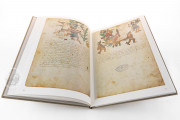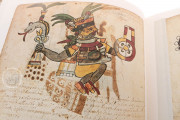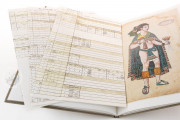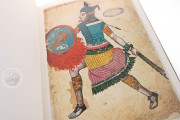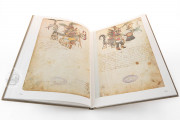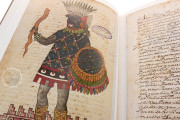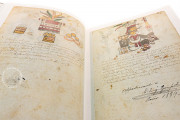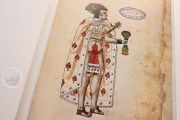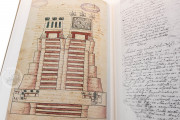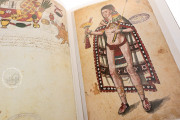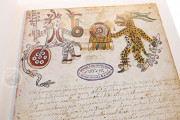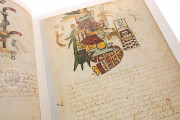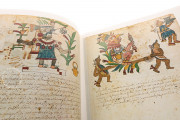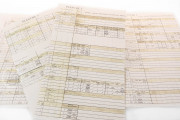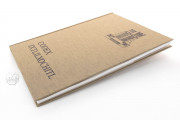The Codex Ixtlilxochitl—also known as the Codex Aubin and the Codex Goupil—is a composite manuscript, all of its portions having been created in central Mexico for a European reader. It contains images, Spanish- and indigenous-language labels, and Spanish-language text describing feasts, deities, and Aztec culture of the pre-Columbian period, as well as a text on the Aztec calendar. It comprises three distinct sections dating from the late sixteenth and early seventeenth century, perhaps brought together as early as the time of the writing of the last section.
It is named for Fernando de Alva Ixtlilxóchitl (1578-1650) a descendant of Texcoco rulers and translator for the viceroyalty in Mexico City, who may have been responsible for writing the last portion of the manuscript.
The Codex Ixtlilxochitl's twenty-seven folios of European paper boast twenty-one half-page and six full-page illustrations. The first section (fols. 94-104) is mostly devoted to feasts and rituals, with a half-page illustration at the top of each page and a description below. Part two (fols. 105-112) features six full-page images depicting Aztec rulers, an Aztec deity, and a temple, with a commentary in Spanish taken from the Relación de Texcoco of Juan Bautista de Pomar (1582). The third section (fols. 113—122) is an unillustrated description of the Aztec calendar taken from the Historia General of Bernardino de Sahagún (1576).
Illustrations in Two Styles
The half-page illustrations of the first section are rendered in a palette dominated by red, ocher, and green with figures outlined in black, as is found in preconquest art of Mesoamerica, but with little assurance. Among these images are two adaptations of Quetzalcoatl, the feathered serpent deity central to Nahautl religion (fols. 97r and 103r). Most of the depicted deities are associated with particular feast days.
The full-page illustrations of part two are in a fully European style, with well-modeled figures. Four Texcocan lords, rendered in brilliant color and using gold leaf, are pictured wearing traditional headdresses, earrings, and lip plugs and carrying ritual objects and weapons. The rain deity, Tlaloc, is pictured with a blue face, exaggerated lips, and long fangs, as is traditional. He wears a headdress of heron feathers and a jade necklace (fol. 109/110v).
Contributions of the Four Scribes
Two scribes contributed to the first part of the codex. One wrote short indigenous-language texts and the half-page Spanish explanatory texts. Another scribe added more labels at a later date. The text of each of the subsequent sections was copied by a different scribe, both writing in European Secretary script.
A Long History of Keen Interest
By the end of the seventeenth century, the composite manuscript was bound together with other material relating to Mesoamerican culture in the library of Carlos de Sigüenza y Góngara (1645-1700), a Mexican Jesuit priest and historian. It retains the foliation it received at that time. It then passed through the hands of Lorenzo Boturini Benaducci (1702-1751) and Juan Eugenio de Santelizes. The manuscript was taken to Paris around 1840 by Joseph-Marius-Alexis Aubin (1802-1891). It came to the Bibliothèque nationale (now Bibliothèque nationale de France) from the collection of E. Eugène Goupil (1831-1895).
We have 1 facsimile edition of the manuscript "Codex Ixtlilxochitl": Codex Ixtlilxochitl facsimile edition, published by Akademische Druck- u. Verlagsanstalt (ADEVA), 1976
Request Info / Price


